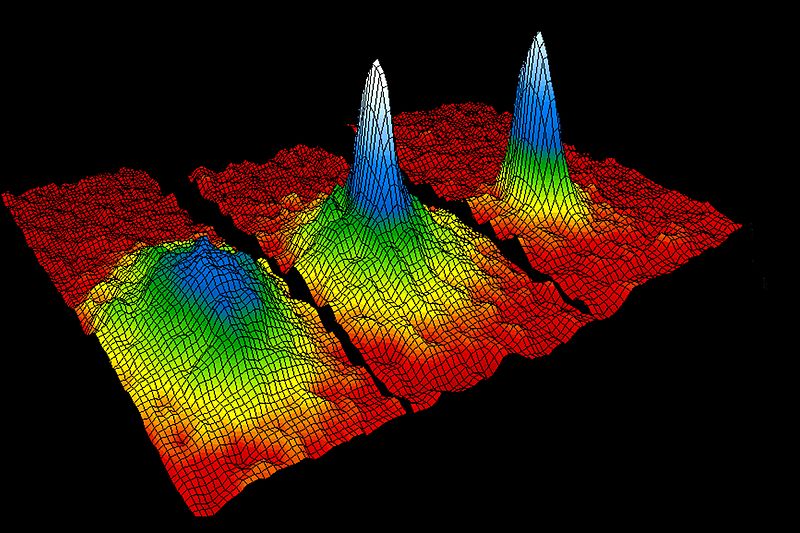Condensed matter physics at CCNY has a long tradition of both theory and experimental work. Currently the research within this sub-field covers problems ranging from strongly correlated systems to topological states and strongly coupled light-matter quasiparticles. Specific interests of the different groups are below:

Experimental
Carlos A. Meriles
With applications ranging from high-resolution sensing to quantum information science, spin control at the nanoscale is emerging as an area of newfound importance. Specific topics of interest guiding our research effort are (i) the development of new spin-based platforms for nanometer-resolution MRI and various nanoscale sensing protocols, (ii) quantum control of individual spin clusters for quantum information processing, (iii) the generation of electron or nuclear spin hyper-polarization, and (iv) the physics and applications of novel color centers in 2D materials.
Laboratory for Optospintronics and Quantum Sensing (LOQuS) →
Vinod Menon
Research in my group, the Laboratory for Nano and Micro Photonics (LaNMP) can be broadly defined as controlling light matter interaction at the nanoscale. Current research interests within the groups include include quantum simulation using condensates in solid state systems, cavity QED with two-dimensional semiconductors, controlling transport and energetics in organic molecules through strong light-matter coupling, and engineered nonlinear optical materials.
Jiufeng Tu
Our laboratory employs various types of spectroscopic techniques to study low dimensional electronic systems, high Tc superconductors, nano-systems and nodal metals. The main experimental tools used are Fourier transform infrared spectroscopy and Raman spectroscopy. Efforts are underway to develop novel vortex spectroscopy techniques and to couple these spectroscopic methods with strong magnetic fields, time-resolved techniques and the intense THz synchrotron radiation of NSLS-II at Brookhaven National Laboratory.
Sergey Vitkalov
Research is focused on effects of quantum mechanics on transport properties of electrons in low dimensional systems.
Lia Krusin-Elbaum
We explore Quantum Materials on nanoscale and mesoscale, towards the emerging applications in spintronics and quantum computing. Our aim is to uncover and understand new quantum phenomena arising from topological effects and complex particle correlations, such as exotic superconductivity and Quantum Hall Effects. Our techniques include interrogating quantum charge and spin transport and optical response at low temperatures and high magnetic fields in nanostructures. We use state-of-the-art nanodevice fabrication and characterization techniques to achieve the stated goals.
Johannes Flick
My research interests lie in describing quantum many-body systems in the static and non-equilibrium limit, such as materials and chemical systems in the strong coupling limit of light and matter, color-centers and defects, or for new devices for quantum information and computations.
Sriram Ganeshan
Strongly correlated electron systems, Chaos and thermalization, Many body localization, Topological phases of matter, Hydrodynamic approach strongly correlated matter.
Pouyan Ghaemi
I am interesting topological electronic phases, light-matter interaction, strongly correlated electron systems, two dimensional Dirac materials and high temperature superconductivity in pnictides and cuprates.
Alexander Punnoose
David Schmeltzer
Modern condensed matter physics is formulated in terms of topological concepts such as Fiber Bundles, Berry phase, Topological Invariants such as Chern number and K theory. We have applied these topological concepts to a number of Condensed Matter problems of current significant interest. They are also important for both quantum information processing/computing (including spintronics, valleytronics, flatronics, twistronics) as well as topological quantum computing. Superconductivity in twisted bilayer Graphene: Layer two is rotated with respect to layer one, as a result the "nodes" in layer two are rotated inducing a chiral phase on the spinor, which is homotopic according to K theory to a chiral superconductor. The Electric and Thermal Hall conductivity in topological materials, specifically Weyl semi-metals. Thermal conductance of an edge mode in a topological insulator._ A tunneling current measurement scheme to observe Majorana -zero mode- induced crossed Andreev reflection.
Last Updated: 10/19/2022 10:19